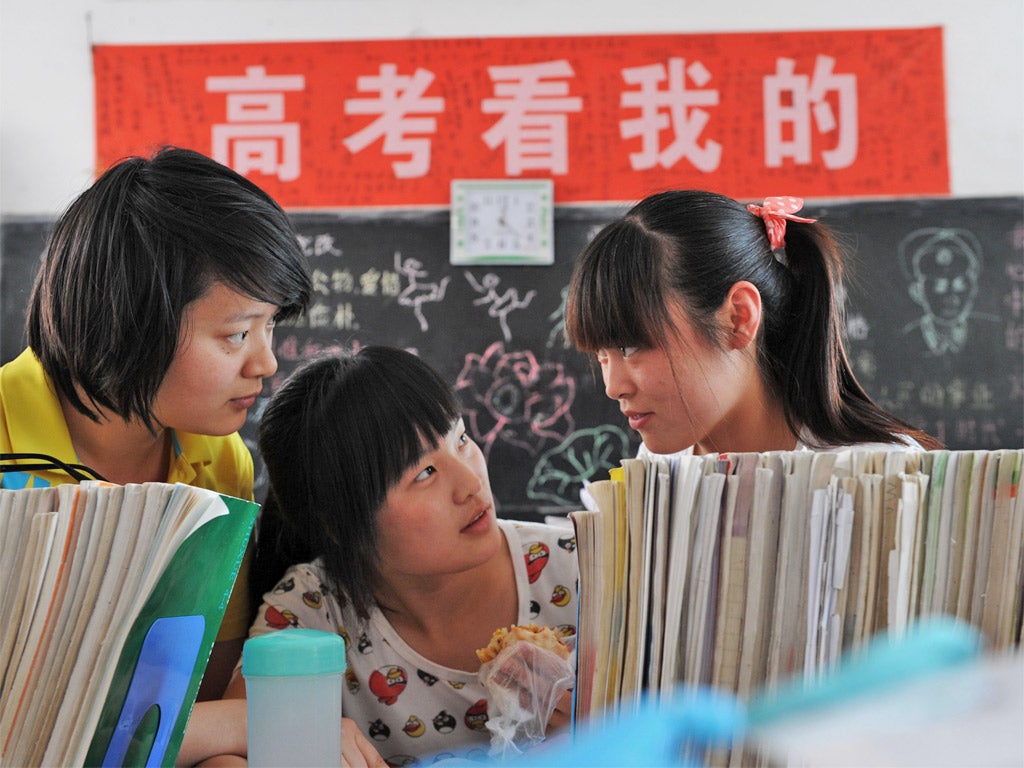The Independent's journalism is supported by our readers. When you purchase through links on our site, we may earn commission.
The Pisa global league table overlooks cultural factors that incentivize learning
It is cultural norms in communities that orient children towards education

Suddenly the whole world is obsessed with the publication of the results of Pisa – the Programme for International Assessment – a kind of global league table of educational performance. This year’s big winners are Shanghai and Singapore. Finland, which used to be considered as the world’s educational high-flyers has lost status. Finland dropped from its previous 6th place in maths to far less glamorous 12th position – which is still far better than the UK’s desultory placing of coming in at 26th out of 66 countries. And overall poor old UK has got stuck in the middle of the Pisa league table way below the leading Asian tigers.
At first sight the Pisa league table tells us everything that there is to know about the relative performance of teenagers from 66 different countries in reading, maths and sciences. However, it can be argued that what these figures reveal is as much about how well groups of students were trained and prepared to pass the Pisa test as about their educational achievements. The fact that many of the students who have succeeded in attaining such astonishing results in the Pisa examinations were systematically trained by an army of private tutors says a lot about the ambitions of their culture. It also indicates that the contribution that their schools have made to their success is only part of the story.
The latest Pisa league table like most international surveys point to the dominant position that Pacific Asian countries have achieved in the global competition for educational survey. There is little doubt that many of these societies have succeeded in providing their children with a remarkably good quality of education. But is it really the case that these impressive result are the result of the unique character of their education institutions or government policies. Pisa appears to suggest that it is.
What Pisa ignores is the role that social, economic and particularly cultural influences play in promoting positive attitudes towards education. It is worth noting that Chinese, Korean or Vietnamese children do not need to study within the institutional environment offered by their society to achieve impressive results. Many of them succeed in doing well and surpassing native pupils in the middle of the league table schools of England or the United States. When I was in Sydney, Australia one headmaster informed me that in his school Asian children tend to come on top and the offspring of British immigrant usually fall to the bottom of the class. The same school – using the same educational strategy and yet the children’s achievements is in the end as much an outcome of their cultural background as their teacher’s efforts.
No one can dispute the importance of pursuing effective education strategies. However, what constitutes effectiveness depends on the cultural and social environment within which education occurs. Whether or not children adopt an enthusiastic orientation towards education is strongly influenced by the cultural norms that prevail in their communities. The most important cultural influence on children's school performance is the expectation their teachers, parents and communities communicate towards them.
The reason East Asian school systems tend to outperform Anglo-American ones is not that they have a superb strategy for mentoring or training teachers, but because they perform within a culture of high expectation. In these societies, schools expect all children to take their studies seriously. As a result, their work rate is significantly higher than those of their peers in Western societies. Not surprisingly, high standards of performance often co-exist with equity. A serious commitment to the value of education is far more important than any pedagogic system or technique. That is why children from Hong Kong, China and Korea outperform their Western peers even when they attend schools in Australia, the US or Europe.
Sometimes ambition leads parents and educators to obsess about examination performance and teach to the Pisa test. But that’s an obsession that they could do without.
Frank Furedi’s Wasted: Why Education Is Not Educating is published by Continuum.
Join our commenting forum
Join thought-provoking conversations, follow other Independent readers and see their replies
Comments